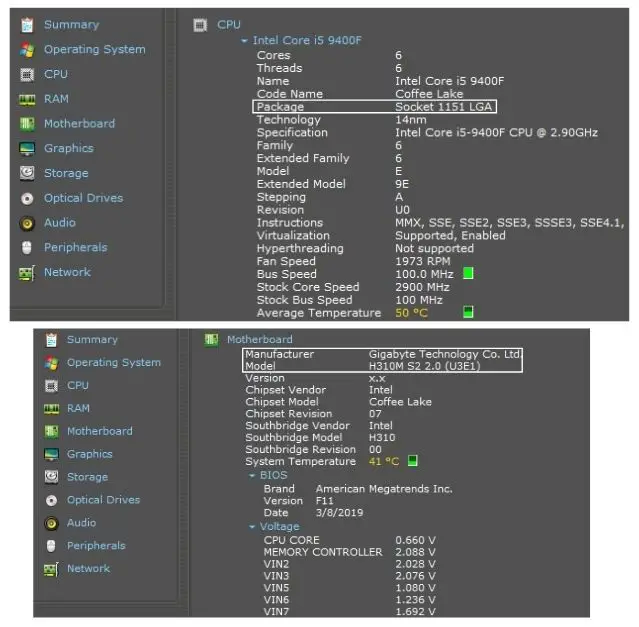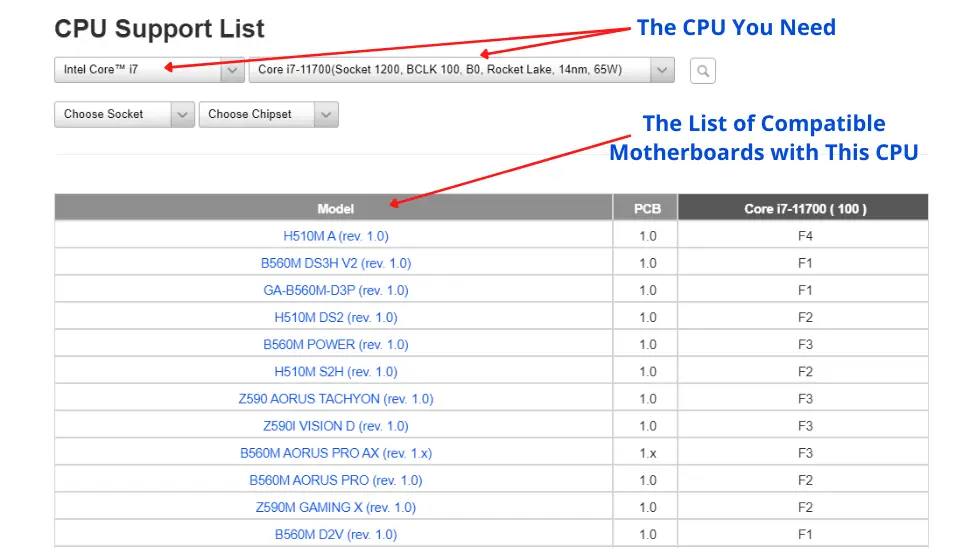How to know if the CPU is Compatible with the Motherboard?
Today, I will cover something significant, and that is compatibility. When you needed to upgrade your CPU, you may wonder, “How to know if the CPU is Compatible with my Motherboard?”
Or even, while building a new PC, the first thing you may concern compatibility. Well, in this article, I will guide you on how can you check or find out if that particular processor chip, whether Intel or AMD, is compatible or not with your Motherboard’s CPU socket and showing you how to make sure everything will work.
Consequently, you will be able to know which processor is compatible with your Motherboard, and you will be able to put a stable one and the most powerful one of its year. In this way, you will avoid incompatibility problems and various errors.
How to know if the CPU is Compatible with the Motherboard?
There are many different computer processors on the market from dual core like athlon, and celeron chips to the six core and eight core CPUs with various features like hyperthreading to meet your upgrades & expectations.
However, there are a few things to consider when choosing a compatible processor with your motherboard. This means that not all processors are compatible with your computer’s motherboard.
The vital thing to consider is the socket. This is the physical standard associated with a motherboard that the CPU must fit. This is mainly a problem with Intel CPUs since the socket may be the same, but they are not compatible with chipsets sometimes.
CPU Socket Compatibility
The motherboard socket is nothing more than the place where the CPU is installed. Each generation of processors supports a specific type of socket. For example, Intel Core i3 and i5 4000 series chips are compatible with the LGA1150 socket. AMD A4, A6 and A8 are compatible with socket FM2.
It is impossible to install a processor on a socket that is incompatible with your architecture. It doesn’t even fit in place. Hence the importance of knowing which socket is used by your motherboard to avoid making a mistake when buying the processor.
AMD processors have always used “AM” to determine their socket since the mid-2000s. Since then, we’ve had AM2, AM3, AM3+, and, currently, AM4. Each socket determines which processor model it belongs to. For example, AMD currently uses socket AM4. This socket has been in use since 2017 and, because of that, it has many processors in its “resume”.
Intel uses a numbering that determines the socket model. We’ve already had LGA 775, LGA 1156, LGA 1155, LGA 1150, LGA 1151, LGA 1151 V2 and currently LGA 1200. Unlike AMD, Intel doesn’t like to keep the same socket for more than one year. So, in a way, it ends up being easier to find a compatible card without having to do some upgrade.
Good to Know ~
The chipset is an essential piece on our motherboard. Each chipset has a specific family of processors that are compatible. But what you need to pay attention to is whether the chipset you are choosing is ideal for the processor you want—remembering that both AMD and Intel use different chipset numbering. So there is no possibility of an AMD motherboard being compatible with an Intel processor and vice versa.
Steps to Know the Compatibility of CPU with your Motherboard:
To know if a processor is compatible with your motherboard, you must pay attention to the socket. This is the section where your CPU “Plugs into” your motherboard. Since motherboards usually come with an instruction manual that informs you about the socket type, motherboard and processor model.
Suppose, for any reason, you have lost the instruction manual. In that case, manufacturers usually include this type of information on their official web pages to facilitate access to the information by users.
And if this information is not available, you can also access it through free software like HWMonitor or Speccy, install it on your computer and open it which will give you all kinds of information about your computer, including information about the motherboard and package socket.

Since I use speccy, in my case, I have a ‘socket 1151 LGA‘ package on my motherboard.
So the next step is to visit the manufacturer’s website and look up your CPU. Suppose I need this Intel i7-9400F. Let’s scroll down and find out; this Intel i7-9400F that uses the LGA1151 Socket (ignore the FC here). Thus, this processor is compatible with my motherboard.

This is pretty much the same for AMD: Looking at this AMD Ryzen 7 5700G , you see that it uses the AM4 Socket. So, knowing all of this, you should now be able to make an informed decision, at least compatibility wise, when buying a processor.

Just make sure you get the correct processor and a motherboard with the correct Socket, and you should be good to go!
Check the Processor Compatibility Directly on Motherboard Manufacturer’s Site:
The easiest and most reliable way to check the compatibility of the processor and motherboard is to check directly from the official websites of the motherboard (on the website of ASUS, MSI, GIGABYTE, etc.).
Visit the manufacturer’s official website and find the motherboard you need there. Below are the helpful links.
On the CPU support section on the manufacturer’s website, you can find a list of processors that work precisely with this motherboard. Choose from this list the processor that suits you in terms of characteristics. That’s it, and now you can be sure that the processor will work correctly with the motherboard.
For instance, in the below image, you can see that the processor ”Intel i7-11700” is compatible with the motherboard models of gigabyte technology.

Note ~
The compatible processor table always indicates the BIOS version that is required for each processor to function. The BIOS version is the important point of motherboard always to pay attention to. Since with an unsuitable BIOS (UEFI or Legacy), the board will not detect the installed chip, and the computer will not start.
With this information, access the manufacturer’s website and find out the different processors that are compatible with your computer. If you still have any questions and want to go easy, contact the technical support of your motherboard so they can provide you with all the information you need to know.
What about RAM & Motherboard Compatibility?
In addition to the processor compatibility with the motherboard, it is worth paying close attention to RAM. The motherboard and RAM must also be compatible. SO, you will sure to find out the type of RAM for upgrade or to purchase new. It can be DDR2, DDR3, or DDR4.
RAM standard must support which one you have or you purchase (DDR3, DDr4 or DDR5). Otherwise, the RAM will not physically fit the slot on the motherboard. You will have to purchase a new die that is already suitable for this board.
Also, RAM has an operating frequency. For this primary memory to work correctly, the motherboard must support this frequency. You can find out the type and frequency of RAM on the manufacturer’s website or store. Also note, if your RAM isn’t compatible or arise any issue you will see DRAM light on the motherboard blinks.
Read Here: Can you Mix RAM that Differ in Size & Speed?
Final Words
And voila, in this simple way, you will know which CPU is compatible with your motherboard quickly and easily. If you have any questions, you can always leave a comment.
And do not be afraid; it is pretty easy to check the compatibility of the processor and motherboard using a few simple methods. After checking, you can indeed find out if the motherboard will work with the processor. Be sure to check the compatibility of all parts of the computer in advance so that later you do not get into an unpleasant situation.
Do not forget to share this insightful article, “How to know if the CPU is Compatible with my Motherboard?” with your social networks; that would help me continue doing more work like this… Cheers!
